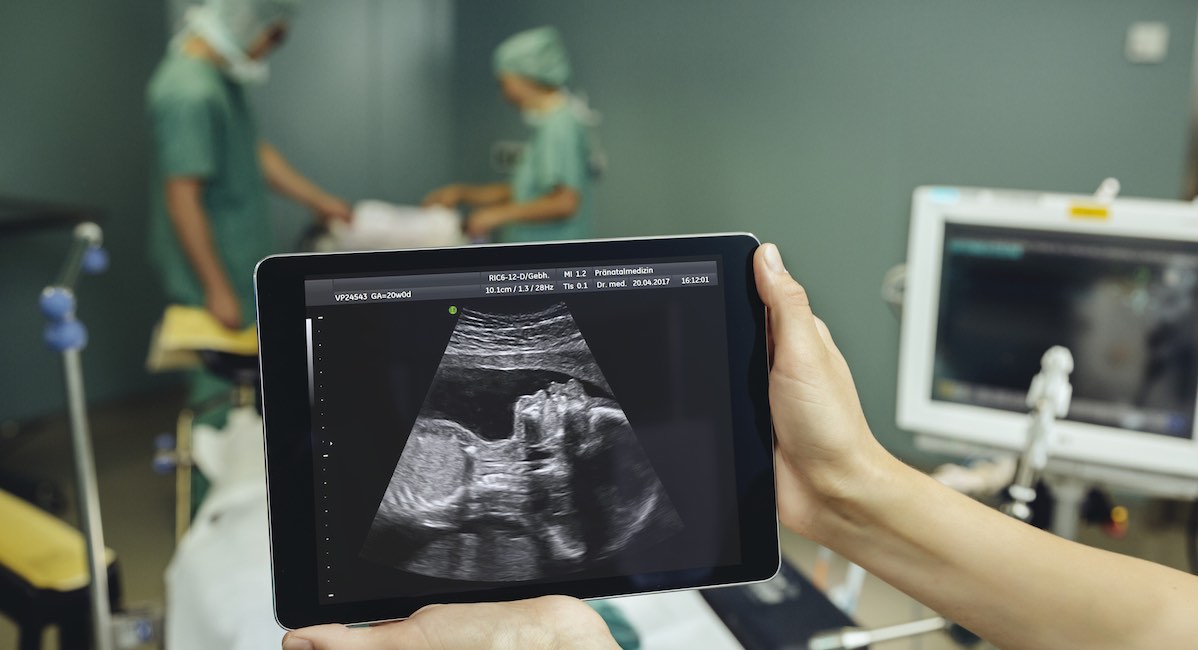Pregnant 31-year-old Luissa underwent a medical procedure in 2016, but the surgery wasn’t for her. It was for her preborn baby girl who had been diagnosed with congenital diaphragmatic hernia (CDH), a rare and often fatal condition affecting one in 4,000 preborn children who have a hole in the diaphragm — the thin sheet of muscle that separates the chest from the abdomen.
The hole causes the liver or bowels to move up into the chest cavity, which prevents the lungs from fully developing, according to The Guardian. Without the procedure, babies with severe CDH have a 15-20% chance of survival. With the procedure, their chance of survival increases to about 50%. It’s not a definitive cure, but it offers hope.
The procedure was pioneered by Professor Kypros Nicolaides, a world-renowned fetal medicine specialist who works at NHS’ Kings College Hospital in London and was elected to the US National Academy of Medicine for improving the care of pregnant women around the world. Nicolaides led the development of the surgery, which is performed at 26-28 weeks and is believed to be able to help in at least one-third of preborn children with CDH.
Writing for The Guardian, Caroline Davies said Nicolaides, called “Prof,” is known for his skilled hands and “trademark banter.” “Crucially, though,” she writes, “[parents] benefit from his many years of pioneering research and experience, which reassures them they are giving their babies every chance in the world.”
READ: Stunning fetal surgery images offer amazing glimpse of baby in the womb
Nicolaides performed fetal endoscopic tracheal occlusion (Feto) in which he inserted a miniature latex balloon through the wall of Luissa’s uterus and through the mouth of her baby. He put the baby girl to sleep with an anesthetic. Then he placed the balloon in the preborn baby girl’s windpipe and inflated it with water until it blocked the airway. The balloon stayed there, trapping fluid in the baby’s lungs and thereby forcing the lungs to expand and develop, until 35 weeks, when it was removed. Davies wrote in The Guardian:
“See, that is the spine, the heart is on that side … and next to it, this black thing, that is the stomach. It should not be there, it should be further down. That’s the issue,” he tells Galloso, as who is on her back, looking at her baby on the overhead monitor as her fiance, Stuart, and her mother, Jill, sit alongside, their eyes glued to the grainy ultrasound images. […]
Precision is everything. Nicolaides expertly guides the fetoscope towards the baby’s mouth and an incredible visual journey begins.
“That is the nostril. That is the upper lip there. That is the mouth, see the gums,” he says as the fetoscope continues over the baby’s tongue, past the uvula and tiny vocal cords and epiglottis.
“Now we are going down the windpipe,” he says. “And there. That is where we will put the balloon.”
The surgery meant Luissa’s baby could be delivered safely and alive. She then would have to undergo surgery to correct the CDH and put her organs that had moved through the hole back to their correct positions. But the prenatal surgery meant her lungs had developed and she could breathe.
As a medical student at King’s, Nicolaides was there at the same time as Professor Stuart Campbell, a pioneer of obstetric and gynecological ultrasound. “Nicolaides was ‘overwhelmed’ by the concept of seeing a foetus before birth, and within a few years was one of the world’s leading in foetal medicine,” noted The Guardian.
READ: Fetal Therapy Think Tank works to advance medicine to save preborn lives
Nicolaides’ office walls are covered in thousands of pictures of the babies he has saved — babies who could have been lost to abortion. In Iceland, one study showed that seven out of eight children diagnosed prenatally with CDH were killed through abortion.
In October of 2019, Nicolaides was diagnosed with Multiple Myeloma, a blood cancer. After the COVID-19 pandemic hit and his life would be at risk if he were to contract the virus, he began performing prenatal surgery through FaceTime, directing his team. “My dream is to continue to work,” he told Parikiaki.com. “I intend to carry on working until I die; there is no such concept in my mind as retirement.”
Though there is intense pressure to save babies, he knows some may die no matter what he does, and he becomes emotionally attached to all of them. “There is no better reward in life than a woman coming along to show you her baby,” he told The Guardian, “and sending photographs to say: ‘Thank you, this baby would not have been born.’ How can you judge that? Against what? That is the ultimate reward.”
“Like” Live Action News on Facebook for more pro-life news and commentary!







